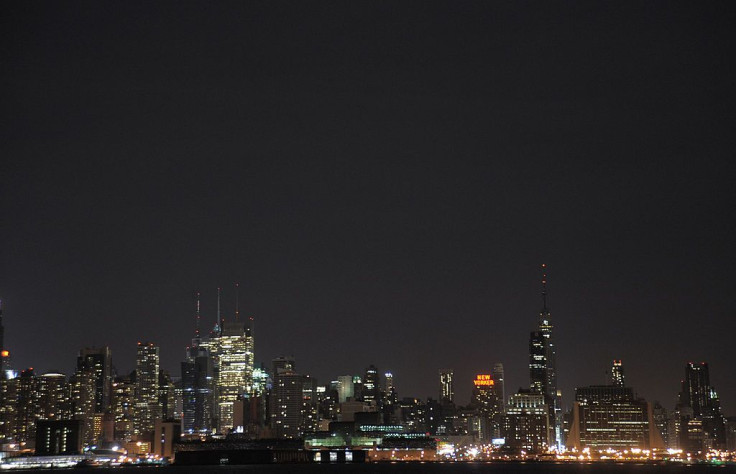Local Law 97: How A NYC Law Can Change The Way We Look At Emissions

Buildings are one of the greatest drivers of carbon emissions in the U.S. with commercial and residential buildings accounting for 39 percent of the overall CO2 emissions. Many states have already proposed or put into action a number of energy efficiency programs and regulations geared toward buildings, focusing on accurate tracking and monitoring of energy use and emission reduction. While they are good attempts, none have been successful in significantly cutting down emissions from carbon and other greenhouse gases, which is necessary to address the increasing fear of what negative impact these emissions could have on the environment.
On the national scale, efforts have been made to implement the Green New Deal, however, delays make it difficult to start the lengthy process of cutting carbon emissions. This is why more states are taking on the responsibility of finding a new reporting and monitoring structure that works to engage and get buildings to take action.
New York State is one of the U.S.’ sustainability leaders and is setting the standard for greener, more energy-conscious buildings with the newly passed Climate Mobilization Act. The Climate Mobilization Act is designed to cut greenhouse gas emissions 40 percent by 2030 and 80 percent by 2050. As the largest driver of greenhouse gas emissions, buildings based in New York City specifically will be mandated to hit aggressive targets and stay within strict emission limits. In order to meet deadlines that are as soon as 2024, action needs to be taken immediately and strategies put into place to kickstart emission reduction.
How Local Law 97 works
Buildings in New York City are already conscious of a number of other local laws that they must comply with, many of which have been designed to monitor energy use and carbon emissions. These include Local Law 87, which requires retro-commissioning and an energy audit every 10 years for buildings over 50,000 square feet, and Local Laws 33 and 84, which require annual rating and benchmarking of energy and water consumption within New York City buildings over 25,000 square feet.
Similar to reporting requirements in other states, the minimal fines and frequency for current reporting has created little to no legal or financial incentive to meet a state’s energy and water efficiency goals. For many buildings right now, it’s easier to simply pay a fine than to update existing infrastructure to a more sustainable and smarter alternative. Local Law 97, however, takes a completely new approach that we believe will work by making it in these buildings best interest to take action instead of just paying for non-compliance.
Local Law 97 is applicable to all buildings in New York City that are over 25,000 square feet and provides a straightforward limit on the amount of greenhouse gas emissions a building can have. The emission limits are pre-determined based on a building’s size and class. While the limits may change, the fines will consistently be costly. With fines of $268 for each metric ton over the limit, non-compliance will no longer be worth it as it will cost more than compliance.
The fines don’t just stop there, additional fines will be issued if reports are inaccurate, false or simply not submitted, making due diligence, reporting and tracking even more critical to building operations. These fines will be issued annually, meaning every year, every ton over, and every annual report not filed will only continue to accumulate. This is the first regulation of its kind to make the financial strain so significant that buildings will need to actively maintain compliance and stay within the limits.
Creating a framework for other states to follow
Many buildings in New York City have expressed concern about meeting the first deadline in 2024, particularly since this applies to both new and existing buildings where energy efficiency was not in the original design. Changing materials, lighting, upgrading chillers and boilers and maintaining steam systems will all be costly and leaves most building operators without any idea where to start, just with an end solution that must be met – which also makes it daunting for other states that want to replicate this.
It’s true that these targets are extremely aggressive and do require immediate action to ensure compliance. To begin this transition into more sustainable operations, new smart building technologies are necessary to meet both short term requirements as well as the long term goal of 80 percent greenhouse gas emission reduction. Technologies such as Monitoring-Based Commissioning (MBCx) systems with built-in commissioning metrics and fault detection analytics are among the solutions that are making these targets easier to achieve.
Gaining transparency into how a building operates and using real-time analytics to determine not just what inefficiencies exist but also which issues provide the greatest potential for energy and opportunity savings are important. MBCx systems combine these real-time analytics with intelligence that is capable of identifying the highest priority issues that are the costliest in both energy and maintenance. They are enabling facilities to monitor hundreds of thousands of pieces of equipment and systems, giving them the bigger picture around energy savings.
Mandating these limits on greenhouse gas emissions is a great first step to show that we can become more sustainable on a far larger scale. Combining legislation with the emergence of new technologies like MBCx and other smart building control solutions is not only making this change possible but also is creating a blueprint for how operational efficiency and reduced energy use and carbon footprint can become a reality in New York State and across the entire U.S.
(Robert Loforte, is the director of Commissioning at MIH Systems Group and Mark Pipher is the VP and general manager of FacilityConneX.)
© Copyright IBTimes 2025. All rights reserved.





















